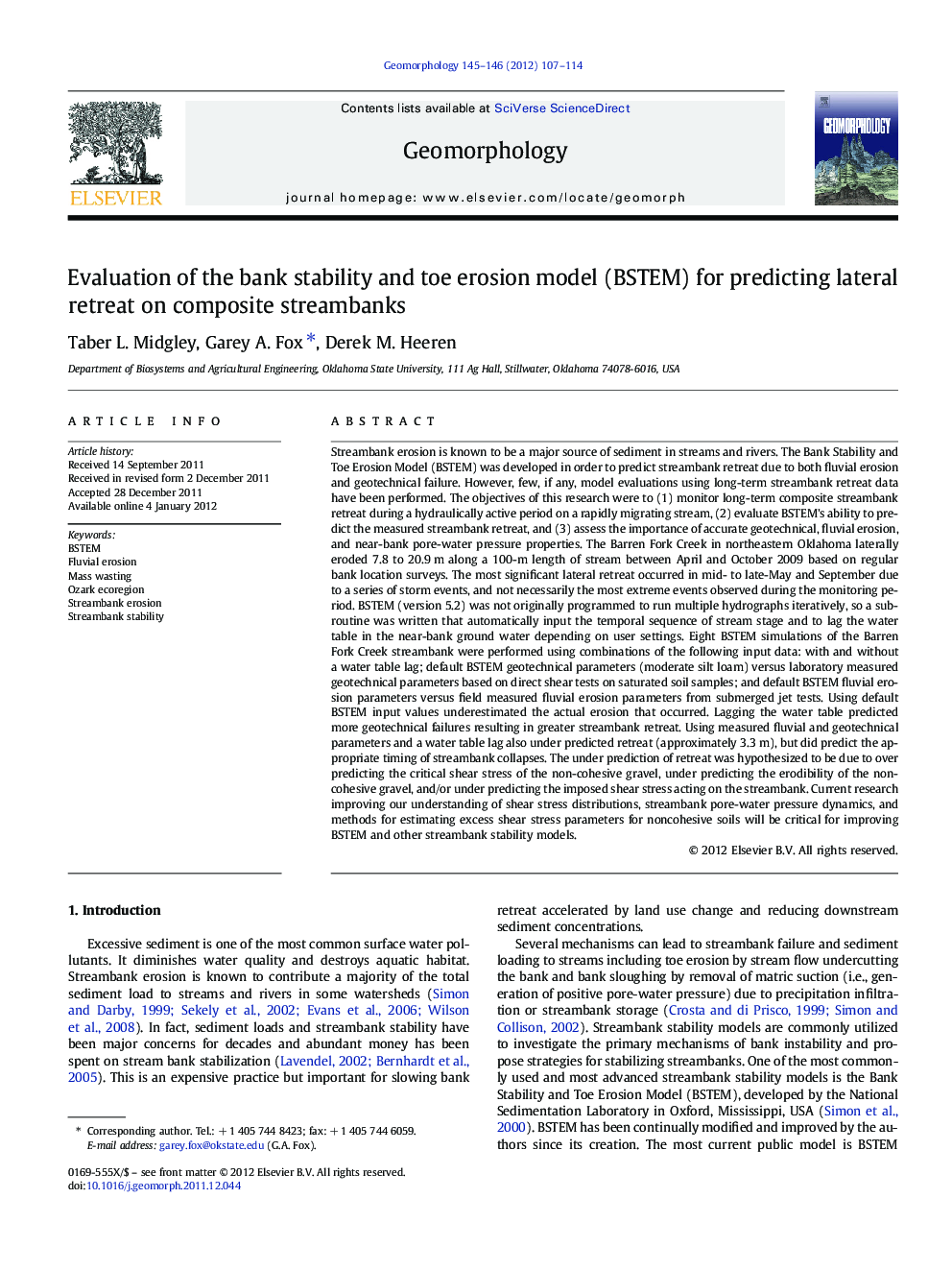| کد مقاله | کد نشریه | سال انتشار | مقاله انگلیسی | نسخه تمام متن |
|---|---|---|---|---|
| 4685285 | 1635486 | 2012 | 8 صفحه PDF | دانلود رایگان |

Streambank erosion is known to be a major source of sediment in streams and rivers. The Bank Stability and Toe Erosion Model (BSTEM) was developed in order to predict streambank retreat due to both fluvial erosion and geotechnical failure. However, few, if any, model evaluations using long-term streambank retreat data have been performed. The objectives of this research were to (1) monitor long-term composite streambank retreat during a hydraulically active period on a rapidly migrating stream, (2) evaluate BSTEM's ability to predict the measured streambank retreat, and (3) assess the importance of accurate geotechnical, fluvial erosion, and near-bank pore-water pressure properties. The Barren Fork Creek in northeastern Oklahoma laterally eroded 7.8 to 20.9 m along a 100-m length of stream between April and October 2009 based on regular bank location surveys. The most significant lateral retreat occurred in mid- to late-May and September due to a series of storm events, and not necessarily the most extreme events observed during the monitoring period. BSTEM (version 5.2) was not originally programmed to run multiple hydrographs iteratively, so a subroutine was written that automatically input the temporal sequence of stream stage and to lag the water table in the near-bank ground water depending on user settings. Eight BSTEM simulations of the Barren Fork Creek streambank were performed using combinations of the following input data: with and without a water table lag; default BSTEM geotechnical parameters (moderate silt loam) versus laboratory measured geotechnical parameters based on direct shear tests on saturated soil samples; and default BSTEM fluvial erosion parameters versus field measured fluvial erosion parameters from submerged jet tests. Using default BSTEM input values underestimated the actual erosion that occurred. Lagging the water table predicted more geotechnical failures resulting in greater streambank retreat. Using measured fluvial and geotechnical parameters and a water table lag also under predicted retreat (approximately 3.3 m), but did predict the appropriate timing of streambank collapses. The under prediction of retreat was hypothesized to be due to over predicting the critical shear stress of the non-cohesive gravel, under predicting the erodibility of the non-cohesive gravel, and/or under predicting the imposed shear stress acting on the streambank. Current research improving our understanding of shear stress distributions, streambank pore-water pressure dynamics, and methods for estimating excess shear stress parameters for noncohesive soils will be critical for improving BSTEM and other streambank stability models.
Figure optionsDownload as PowerPoint slideHighlights
► Bank retreat of 7.8 to 20.9 m during a 9-month period along the Barren Fork Creek.
► Most significant streambank retreat occurred during series of high flow events.
► BSTEM under predicted observed lateral bank retreat when applied to the streambank.
► Water table response in the streambank was an important driver of predicted failure.
► Improved methods to estimate erodibility of noncohesive sediment are needed.
Journal: Geomorphology - Volumes 145–146, 1 April 2012, Pages 107–114